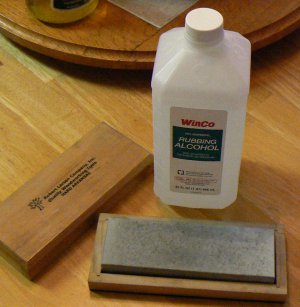- Joined
- Feb 2, 2013
- Messages
- 3,958
Could you tell us more about the ceramic stones?
Hi John,
I don't know their composition, but the are advertized as ceramic.
completely by accident, i found them on Ebay( http://www.ebay.com/itm/AC167-Smith...222?pt=LH_DefaultDomain_0&hash=item23489c0a86)
they are 1000 grit and have proven to be flat, cheap and effective from my experience.
they may shatter upon dropping it on any hard surface, i surmise.
I have used ceramic rods (crock sticks) for many years and can produce shaving sharp edges, i just recently found the flat stones.
there are rods also from different sources and manufacturers.
i use them dry, and with oil or water for different materials.
i dedicate a stone for each method as to not cross contaminate stones (just a pet peeve/OCD thing for me)
Last edited:

